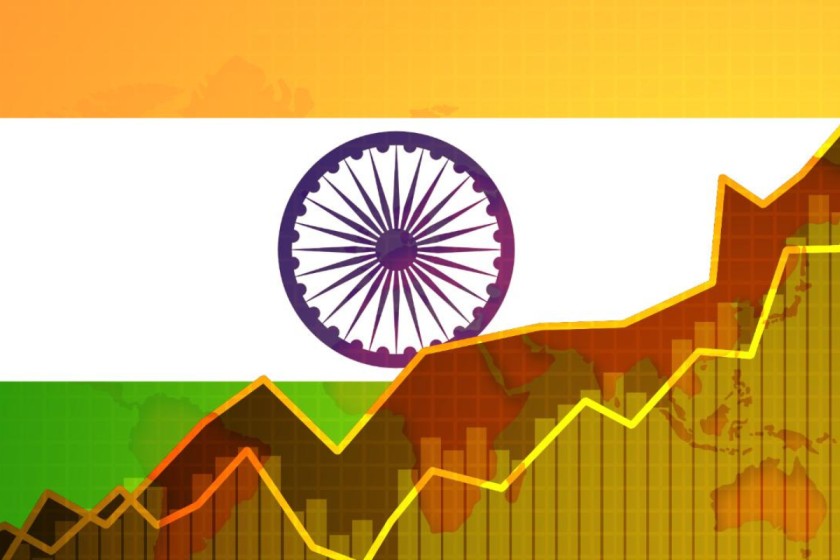- September 28, 2023
Is there a better way to capture India’s growth picture other than GDP?

India’s journey to become world’s third-largest economy by 2027 is within reach, but accurate GDP measurement is crucial.
The current GDP estimates place India as the fifth largest economy in the world. Prime Minister Narendra Modi has set a goal to make India a $5 trillion economy by 2025 which presently seems unachievable mainly due to Covid disruptions. However, India is on the path to becoming the third-largest economy around 2027 as estimated by many. Speaking at the inauguration of Bharat Mandapam, Modi further asserted that India would be the third-largest economy in his third term. This is a huge task. It requires constant and continuous cooperation and action on the part of all the actors including the private sector, governments, policymakers and bureaucracy and, most importantly, the citizens at large through their active participation.
However, all actions towards this goal will be futile unless growth is captured fully and accurately. The primary responsibility for the measurement of GDP is with the Ministry of Statistics and Programme Implementation. The Ministry must gear itself up to develop systems to be able to do so. The question is if the ministry is ready for this.
One of the most important tasks to measure GDP accurately is the immediate revision of the base year of the national accounts statistics which has already been delayed considerably due to various reasons, including the pandemic. The country’s GDP is presently computed with the base year of 2011-12 which is now more than 10 years old. Under normal circumstances, the base should have been revised after five years in 2016-17, with the readiness for another revision for 2021-22.
GDP estimates based on an outdated base would not adequately capture new activities being undertaken in the economy. It is expected that revision of the base would result in capturing of a lot of new activities being undertaken in recent years, due to both efforts of the present government and through private initiatives.
In the last 10 years, the Modi government has made large investments in infrastructure. This would have resulted in the augmentation of additional and diversified production capacities and hence would have led to an increase in the production of goods and services. Further, with the improving image of the country globally and greater ease of doing business, a large inflow of foreign investment has also contributed towards improved capital investment and hence increased value addition due to diversification, adoption of efficient technologies and increased capacity. Therefore, new activities should be properly and adequately captured in the compilation process.
The compilation of GDP itself is a complex exercise and the revision of the base year is still more challenging. This requires a complete assessment of various data sources presently used for compilation and an examination of the feasibility of using new sources of data which have come into existence during the intervening period. Such new data sets should be used with caution and must be in accordance with the global guidelines provided in the System of National Accounts 2008. Considering the time required to undertake such an exercise, MOSPI and the National Statistical Commission should initiate the process at the earliest.
Unfortunately, MoSPI has not come out with the results of various surveys like the consumer expenditure survey and the annual survey on unincorporated enterprises which are crucial for the base revision exercise. Further, the exercise to examine other available databases, especially the newly created databases from GST and digital payments, should commence immediately.
There are also requirements for improvements in the procedure for the compilation of GDP in the country. During the last base revision, an effort was made to introduce Supply Use Tables which are critical for the validation of national accounts statistics. Due to a lack of experience in preparing SUTs in India, the procedure could not be adopted for validation before the GDP is released either annually or quarterly. Now, India has comprehensive experience in preparing SUTs and validation of the estimates should be carried out before the release of estimates. This would also take care of confusion faced by some of the followers of national account statistics in understanding the “discrepancies” brought out in the estimates as a balancing term on the expenditure side of GDP. After the adoption of the system of validation, discrepancies between the income and expenditure side estimates will disappear as is the case in the US, UK and other European countries.
MoSPI should initiate the process by constituting an advisory committee on National Accounts Statistics with professional experts from academia, industry and civil society and also set up working groups for the revision of the base year. A decision on the new base year should be taken at the highest level after due consideration of data availability and an assessment of whether the year has been normal or not. Steps should also be taken to change the base for all relevant price and production indices.
Kumar is Distinguished Fellow, Pahle India Foundation and former Director General, MOSPI and Verma is former Director General MOSPI
